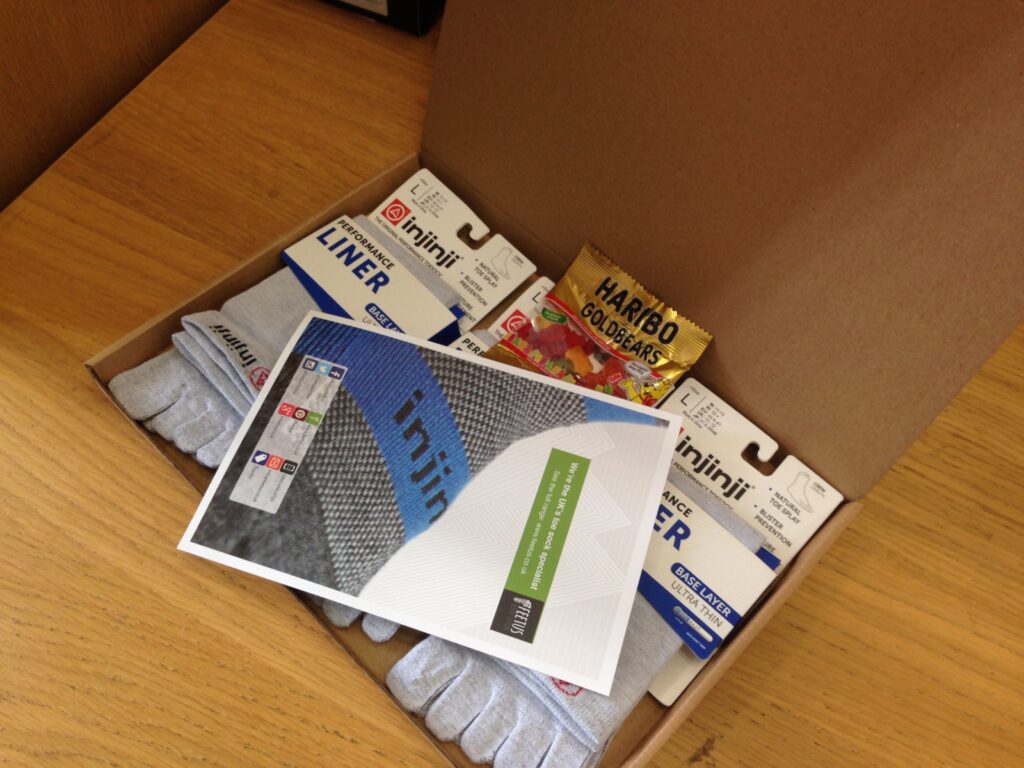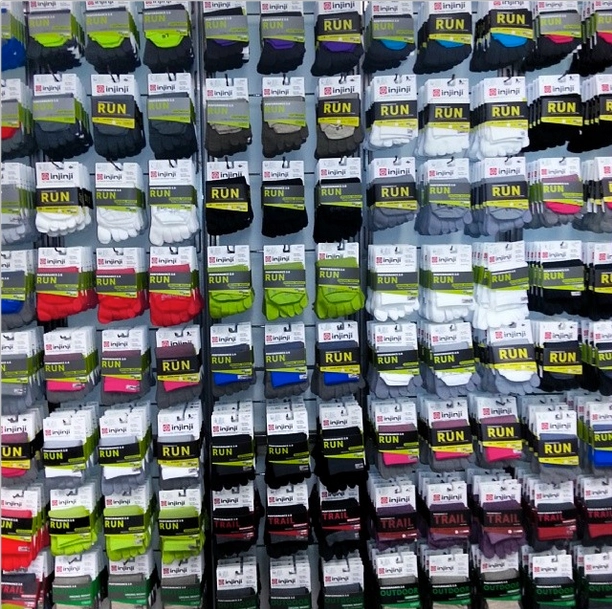How toe socks saved my shoe business
Why sometimes your hero product isn’t your profit hero.
People associated Feetus with Vibram FiveFingers (those strange toe shoes that looked like gloves for your feet). And yes, Vibrams brought in significant revenue. But here’s what people didn’t realise: the shoes were just the hook. The real profit came from toe socks.
When I started the company, I assumed the same thing most people do: higher price equals more profit. Vibrams retailed for £100-140. Surely that’s where the money was, right?
Wrong.
The Product Nobody Wanted to Talk About
Vibrams are a brilliant product, but they’re a nightmare to sell at scale. The supply chain was chaotic (still is, actually). They’re niche, which means high return rates because fit is difficult. Some people loved them immediately. Others found them uncomfortable and sent them back. Return rates hit 30% in some periods.
Margins were thin. Suppliers had the power. Customers were price-sensitive. Competition was becoming fierce. I was making money, but not the kind of margins that build sustainable businesses.
Then I noticed something. Every Vibram customer had the same problem: foot odour. Wearing toe shoes in bare feet meant sweaty, smelly shoes within weeks. The solution? Toe socks.
That’s when everything changed.
The Magic of Injinji
Injinji toe socks aren’t just odour prevention, they’re performance gear. Ultra-runners swore by them for blister prevention. When your toes are separated, they don’t rub against each other. No friction, no blisters. For anyone running serious distances, that’s transformative.
At £10-20 per pair, customers initially balked: “Twenty quid for socks?!” they’d say. Then they’d try them. Then they’d buy five more pairs.
Here’s what made toe socks beautiful from a business perspective:
Return rates: Under 2% (vs 30% for shoes)
Margins: 80-500% depending on sourcing (vs 20-30% for shoes)
Postage: Cheap (small, light, easy to pack)
Repeat purchases: Customers came back regularly for more
Upsell conversion: Nearly everyone buying Vibrams added socks
The economics were incomparable. I could make more profit on a couple of pairs of socks than on a £120 pair of shoes.

Going All In
Once I understood the economics, I went big. Whilst competitors ordered cautiously (maybe 50-100 pairs at a time), I was ordering thousands.
The smart move came at the end of every season. I told the Injinji supplier: whatever old stock you have, I’ll take it all if you give me a discount. They were happy to clear inventory. I was getting 40-80% off the normal purchase price.
Here’s the thing: the vast majority of customers had no idea which socks were current season versus last season. They just wanted quality toe socks. There was never any need to discount. I was buying at 40-60% off and selling at full retail price.
Those bulk purchases transformed the business. I could afford to give socks away in promotions (buy X, get free socks). I could experiment with different offers. The cost to me was minimal, but the perceived value to customers was huge.
Making Competitors Feel Small
Every time a massive sock order arrived, I’d run a competition on Facebook called “Socks in the Box.” Followers had to guess how many pairs of socks were in the delivery. Winner got a free pair.
The cost to me? About £15 at retail price, maybe £3 in actual cost. The engagement? Massive. But the real brilliance was psychological.
My competitors saw these posts. They watched me unload pallets of socks whilst they were carrying in boxes. They knew the volumes I was ordering. It established dominance.
Within two years, I’d become the UK’s #1 Injinji retailer. I was shipping across Europe (this was pre-Brexit, when cross-border EU sales were straightforward). The business that everyone thought was built on innovative toe shoes was actually funded by humble toe socks.
The Lebanese Connection
I didn’t stop at Injinji. I found other suppliers, including a manufacturer in Lebanon. Sending money there was a nightmare (wire transfers were complicated, delivery was unpredictable) but the margins made it worthwhile.
I could buy socks for less than £1 and sell them for £10+. Even accounting for the hassle, the economics were too good to ignore.
I expanded across multiple platforms: Feetus.co.uk, Amazon, eBay. Each channel became both a revenue source and a marketing opportunity. Every eBay order included promotional materials for Feetus with discount codes. I was cross-selling constantly.

The Real Lesson: Follow the Margins, Not the Glory
Everyone wants to talk about the hero product (the innovative thing that gets attention). For me, that was Vibram FiveFingers. They brought people to the site. They generated buzz. They made Feetus recognisable.
But the business ran on toe socks.
This is the lesson most entrepreneurs miss: your hero product isn’t always your profit hero.
The product that gets attention and the product that makes money are often different. Smart businesses figure this out fast and optimise accordingly.
Whilst competitors were fighting over shoe sales and razor-thin margins, I’d quietly built an empire on accessories. The thing people barely noticed was funding everything else.
Why This Matters Beyond Feetus
This pattern exists everywhere:
• Apple makes more profit on AirPods than most companies make on their entire product line
• Amazon’s profit comes from AWS, not retail
• Cinemas make money on popcorn, not tickets
The hero product gets people through the door. The profit product pays the bills.
If you’re building a business, pay attention to where the actual margins are. Don’t fall in love with the thing that gets attention. Fall in love with the thing that makes money.
Sometimes that’s the same product. Often it’s not.
For Feetus, it was toe socks. Unglamorous, overlooked, highly profitable.
Whilst everyone else watched the shoe market, I built an empire on socks. And that made all the difference.




